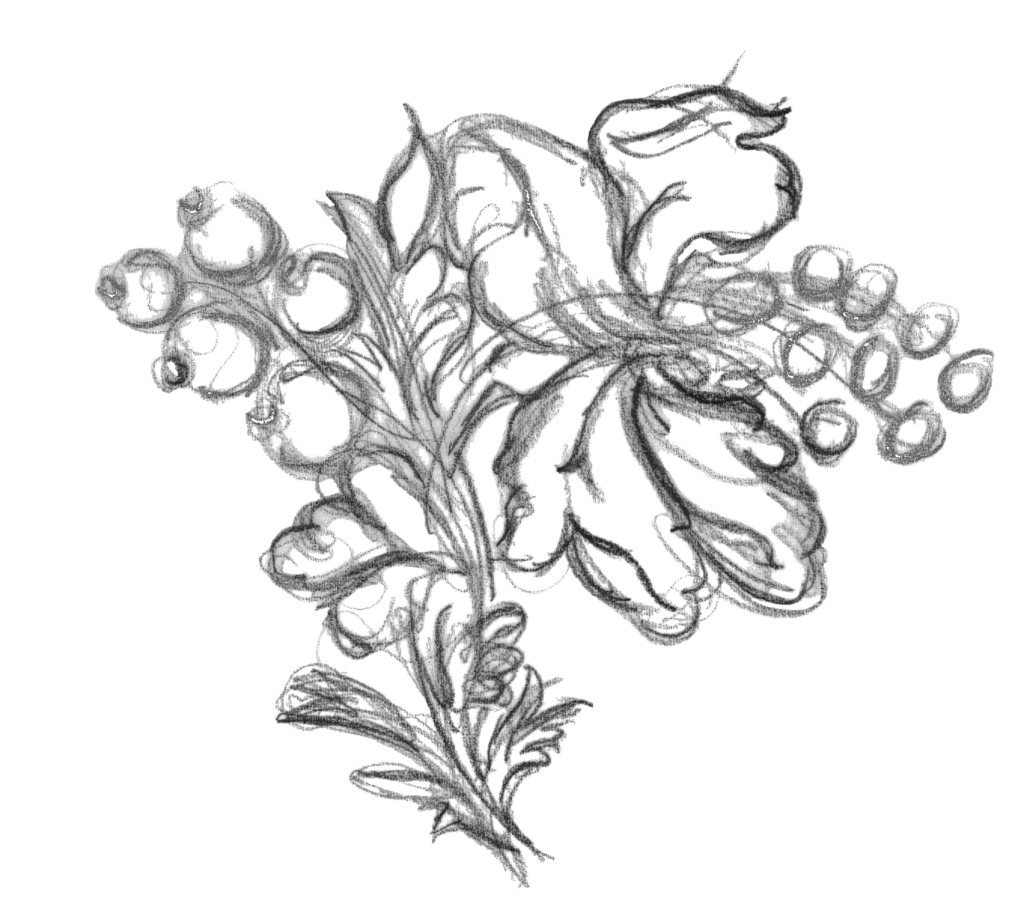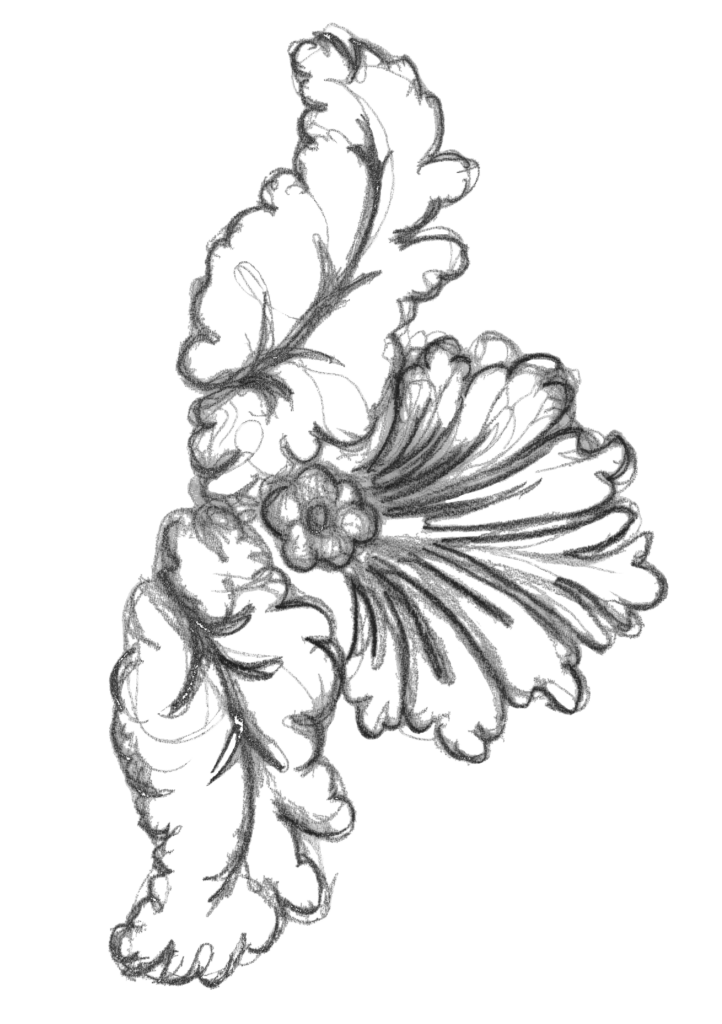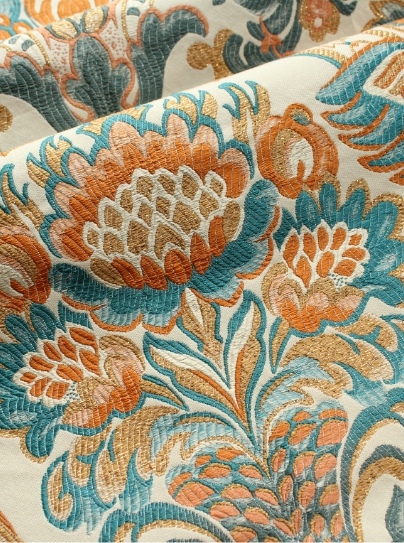18th Century Textiles Unlocked: Spitalfields – A study of Social History & The Textiles Industry
On the 1st of March, our account manager Charlotte embarked on a captivating journey into the heart of Spitalfields. She attended the V&A’s enlightening study day, “Unlocked: Spitalfields,” guided by esteemed social historian Mike Berlin. The event offered a profound exploration of Spitalfields’ hidden stories spanning from 1666 to 1851. Intricately weaving together social history and the vibrant past of 18th Century textiles.
You only need to walk a short distance to see the lasting effect of the textiles industry in Spitalfields.
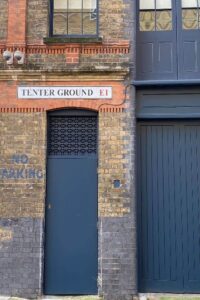
Tracing the Threads of History: A Walk Through Spitalfields
The road Tenter Ground was named after open areas of land where newly woven cloth was stretched out to dry to ensure that the cloth would dry flat and even. It stands as a testament to the area’s rich textile heritage.
In 1893 Robert Horner, a former market porter, built the ‘new’ Arts & Crafts Spitalfields Market which can be seen today. Above the market and shop fronts, you can see flats which were built for the market stall owners.
Middlesex Street, (previously Pentagon Street,) was known in the 18th Century due to the rag trade, (second-hand clothes.) This was built on servants swapping their annual perquisite gift of clothing from the grand houses they worked in. These are a few examples of how the 18th Century Textiles trade influenced the area.
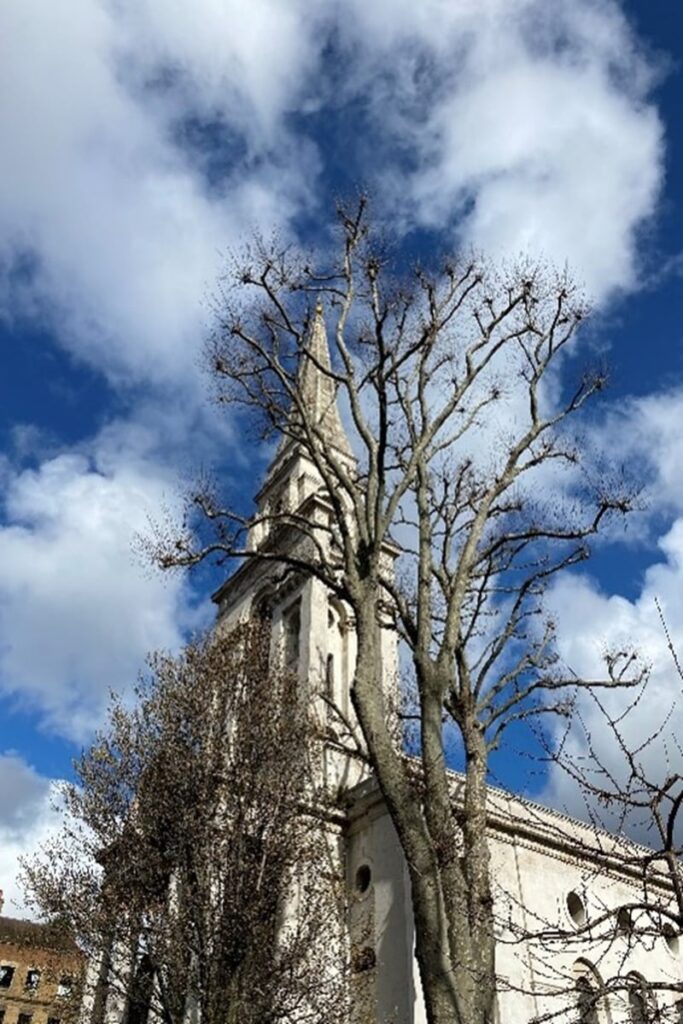
Christ Church, Spitalfields
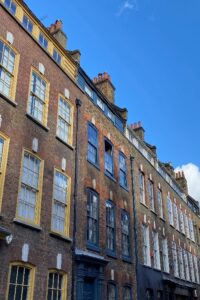
Wilkes, Princelet & Fournier Street, Spitalfields
Christ Church, Spitalfields, was built in 1780 by Nicholas Hawksmore who worked alongside Sir Christopher Wren. Coincidentally Humphries has had the pleasure of providing silk damask for Kensington Palace and Windsor Castle, where Wrens works can also be seen.
The Houses of Wilkes, Pricelet and Fournier Street in Spitalfields are often referred to as a typical 18th Century silk weaver’s house. This is not strictly true, as the weavers who did live here were elite ‘master’ weavers. The industry has a vast amount of people involved and most weavers were employed to weave plains and would have lived in simple two-storey houses from Spitalfields to Bethnal Green. Unfortunately, Examples of these houses no longer exist.
The Master weavers subcontract weavers only once an order has been received. These Weavers were paid per piece of cloth. This left weavers in an often precarious living situation. For example, if the King of England died, those who would normally order the ornate, colourful fabric would be submitted to wearing black during the mourning period and would not be ordering new cloth. It should be noted that once the silk trade was forced to move out of London, these houses became in disrepair and therefore are often not strictly ‘original’. Many have been modernised and are currently live in, except one which is used for filming! If you look to the top of the roof, you can just about see windows which are an original feature used to ensure good light for the weavers.
The silk weaver’s battle between master weavers and workers had grown significantly in the 1760s, largely due to pay. Masters turned to hire untrained women and children and as a result, tactics became violent. A group known as ‘cutters’ it is said to have started from Wilkes Street would slash the silk from the looms and burn the cloth in the street.
On Princelet Street there is a blue plaque for Anna Maria Garthwaite who is well known for drawing the sett of weaving patterns for accurate horticultural drawings for ‘Brocade fabric’. Read more about Tissues, Lampas and Brocatelle which is a key quality of 18th Century textiles here
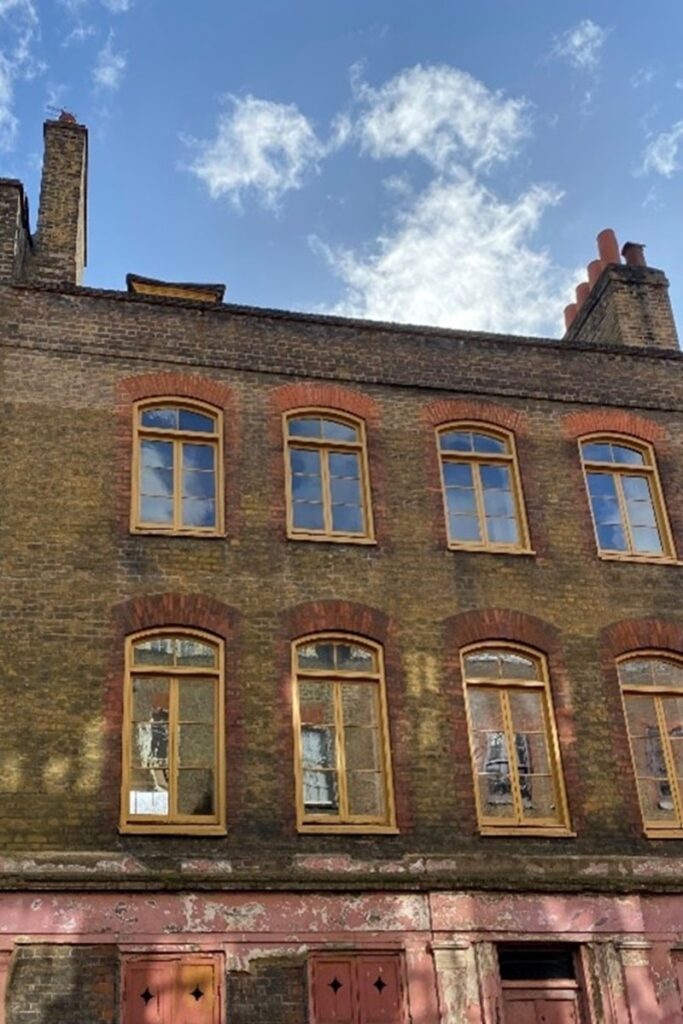
The area of Spitalfields has been defined by cultures from Hugeuenotes, Jewish, Irish and Bangladeshi communities for over four centuries. Many buildings around this area at some stages were safe havens for displaced communities where they could come together with their shared heritage and faith. A wonderful example of this is now the Brick Lane Jamme Masjid which was built in 1743 by French Huguenots. Once the Huguenots dispersed from the area due to the Spitalfields Act, this building became a Synagogue in 1898. Today this building is a Mosque for around 3000 worshippers.
Throughout the day, the intricate relationship between textiles and Spitalfields became vividly apparent, thanks to the illuminating insights provided by the V&A. A stroll through the streets of Spitalfields unveils the enduring legacy of the textiles industry, echoing through time.
Preserving Heritage, Crafting Excellence at Humphries Weaving
The Humphries Weaving Company started business in the Suffolk town of Sudbury in 1972. Weaving has been a key employer in the area dating back to the Declaration of the Spitalfields Act in 1790’s which forced manufacturers of silk in the east end of London to move away to evade the taxes. Towns on the Essex Suffolk border such as Braintree, Halstead and Sudbury found themselves outside the scope of the Act. Sudbury’s position was advantageous on the navigable river Stour, which offered a transport passage to the Thames estuary and the Port of London for export to the Americas.
An example of design from the 18th Century is our Hatfield damask which is attributed to the Spitalfields weaver James Leman in Chinoiserie style. This is based on findings at the V&A Collection by Natalie Rothstein and can be seen at Hatfield House in Hertfordshire.
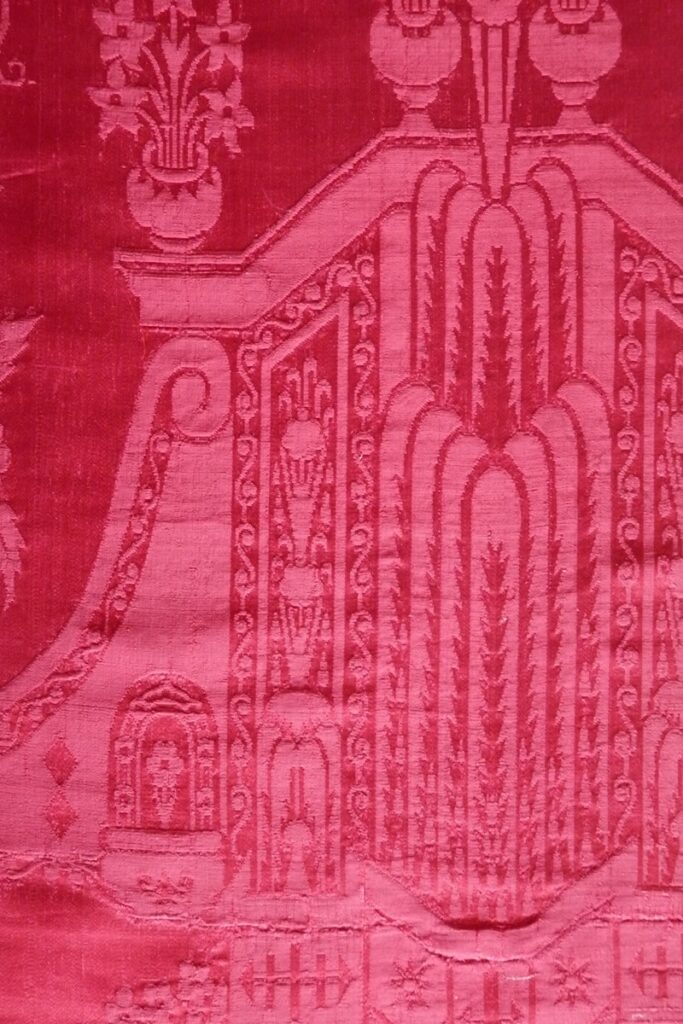
Another example is our Pannier Damask which can be seen in the Blue Drawing Room at Buckingham Palace and is more recognisable as an 18th Century design. To see more information click here
At Humphries, we pride ourselves in meticulously recreating wonderful designs to create historically accurate designs. The designs have been given to us by a historic house, museum or private individual in varying states of array. Humphries has had projects with the last remaining repeat such as the Hatfield Damask or where fragments of the design have been lost. We have our research, and specialist knowledge that helps us create as accurate as possible designs. If you would like to learn more about our design services please click here or contact us at fabrics@humphriesweaving.co.uk
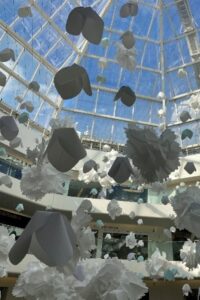
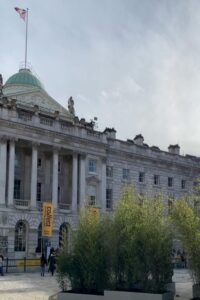
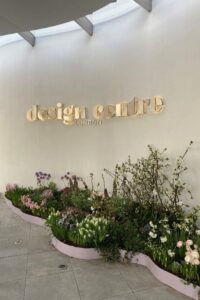
Interior Design & Crafts Inspiration
Following this historic Tour about 18th Century textiles, the Humphries team visited a couple of exhibitions to inspire their more contemporary fabrics. Collect at Somerset House was a wonderful showcase of craftspeople from around the world. They also visited a particularly buzzing Design Week at Chelsea Harbour. It is fantastic to see so many craftspeople, and interior decorators within such an excited atmosphere, while reviewing both old and new textiles throughout the day.
[/spb_text_block]
